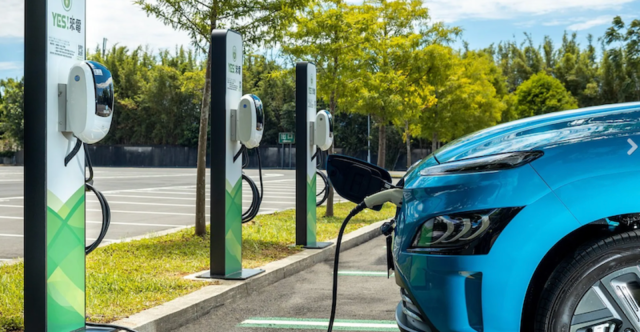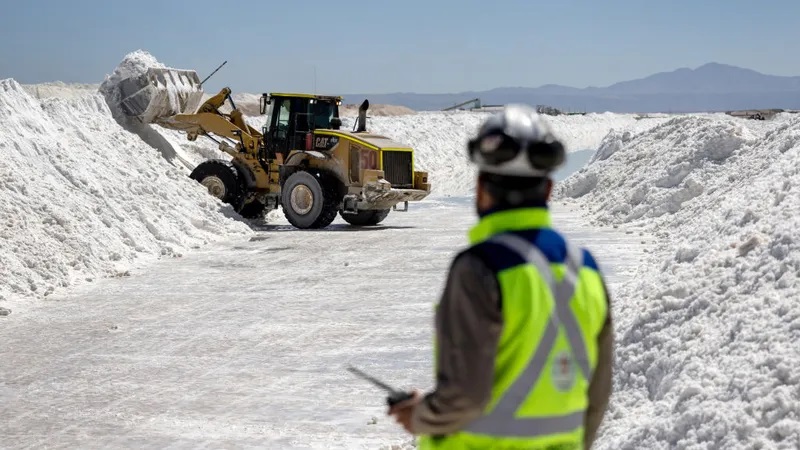With the vigorous development of the new energy industry, lithium, as the core raw material for power battery production, is regarded as the “white oil of the 21st century”. China, Japan, the United States, Europe and Australia have listed lithium as a strategic metal, and its important position is highlighted.
Fitch Solutions (Fitch Solutions) subsidiary BMI pointed out in a newly released report that the world will face a shortage of lithium as early as 2025. According to data from the World Economic Forum, global lithium production will be 540000 tons in 2021, and global annual production is expected to rise to 1.5 million tons by 2030, but demand will also exceed 3 million tons. Although the supply of lithium resources will grow, demand will grow at a faster rate, creating a gap between supply and demand.

# Electric vehicle sales surge, China’s lithium resource gap is widening
According to the US Geological Survey, the total global reserves of lithium resources are about 80 million tons. Bolivia’s reserves are up to about 21 million tons, followed by Australia’s 17 million tons and Chile’s 9 million tons. China’s known reserves are about 4.5 million tons, the United States about 1 million tons.
Lithium is an indispensable resource for the production of electric vehicle batteries. The support of countries around the world for the new energy industry has intensified the competition for lithium resources. An official goal announced by the Biden administration in 2022 shows that by 2030, at least half of all new cars sold in the United States will be based on electric or other zero-emission technologies. In November 2022, the price of lithium carbonate soared to a record high of nearly 600000 yuan/ton, more than 12 times the price in January 2021.

BMI pointed out in the report that the surge in demand for lithium resources in China will become the main reason for the shortage of resources. China is currently the world’s third largest lithium producer. In 2022, China’s electric vehicle sales will account for 60% of the world’s total, and battery production will account for 3/4 of the world’s total. It is estimated that from 2023 to 2032, China’s lithium demand for electric vehicles will grow by an average of 20.4 per cent annually. In contrast, China’s lithium supply increased by only 6% during the same period, which is not even a third of the expected demand growth.
According to the forecast of S & P Global Commodity Insights, global electric vehicle sales will reach 13.8 million in 2023 and will soar to more than 30 million by 2030. By the end of 2025, global lithium carbonate production will have a “small deficit” of about 40,000 to 60,000 tons, which is expected to surge to 768,000 tons by the end of 2030. While global lithium supplies are likely to remain plentiful in the coming years, regional supply imbalances remain inevitable, especially in regions such as the US, China and Europe.
In order to expand production capacity, Chinese companies have begun to deploy globally. In 2022, Ganfeng Lithium, China’s largest lithium producer, paid $0.962 billion for Argentina’s Lithea Inc.. In 2021, Ganfeng also acquired Mexican mining company Bacanora Lithium for $0.391 billion. The company is developing a new mine in the northern Sonora region with a planned annual output of 35000 tons.

# In order to maintain the supply of lithium, the global car companies began to rush to mine
Although the global lithium mine production continues to rise, the investment in production is still very insufficient. At the same time, the development of lithium resources is a long-term process. According to Lufute data, there are currently only 101 lithium mines in normal production in the world, and hundreds of lithium mines are still under exploration. According to data from the International Energy Agency, it took an average of more than 16 years for lithium mines to be put into production from 2010 to 2019. In order to ensure the supply of batteries, global car companies are competing for lithium resources.
GM CFO Paul Jacobson (Paul Jacobson) said at a conference held by Deutsche Bank in mid-June that “it is necessary to establish a relationship with partners who can provide lithium resources.” General Motors has invested $0.65 billion billion in a Nevada lithium developer for direct mining rights, the largest source of lithium in the United States.
Ford has also signed 11-year contracts with lithium suppliers on two continents; Volkswagen and Honda are trying to reduce demand for new lithium mines by forming recycling departments; data released by BYD show that it has invested more than $5 billion in lithium mining and refining in the past 18 months, including $0.29 billion in a Chilean lithium mine; NIO also acquired a 12% stake in Australian lithium miner Greenwing Resources for $8.1 million in 2022. Global automakers’ investment in lithium resources can help partners mine and ultimately create more production.
# VCs flock to mining deals to drive energy transition
Mining is a typical traditional industry, and emerging companies have struggled to overcome the high costs of disrupting traditional mining technologies. However, with the innovation of technology, the global venture capital gradually realized that the mining industry is the main driving force to promote the global energy transition.
The International Energy Agency predicts that the global economy will need six times more fossil energy in 2040 than today to drive the goal of zero emissions by 2050. In August 2023, lithium, nickel and other rare minerals investment companies TechMet completed a $0.2 billion financing from investors such as S2G Ventures and Lansdowne Partners, with valuations set to exceed $1 billion in the coming months. For macro considerations, the U.S. government development bank invested $30 million in TechMet in 2022 and is expected to invest another $80 million this year.

Bill Gates’ Breakthrough, Energy Ventures, has also invested in KoBold Metals, a clean energy exploration company that uses machine learning to identify rare metals more efficiently. In June, KoBold raised $0.195 billion, valuing it at $1 billion.
In addition, some start-up companies focusing on energy conservation and emission reduction are also being favored by venture capital. Battery recycling company Redwood Materials is one of the most financed climate technology companies in the private equity market. the company completed a round of equity financing of more than us $1 billion on August 29, led by Goldman Sachs, Capricorn technology fund and T. Rowe Price.

* 2018-2023Q3 Global Mining Venture Trends, Source: Pitchbook *
At present, the global venture capital investment in the mining sector is still in the early stages, but the funds absorbed are rising year-on-year. Pitchbook data shows that as of the end of August this year, mining companies have received more than US $0.55 billion in venture capital, of which nearly US $0.3 billion was raised in the third quarter alone; in the first three quarters of last year, the industry raised US $0.508 billion.
(Source: vernacular Wall Street)











